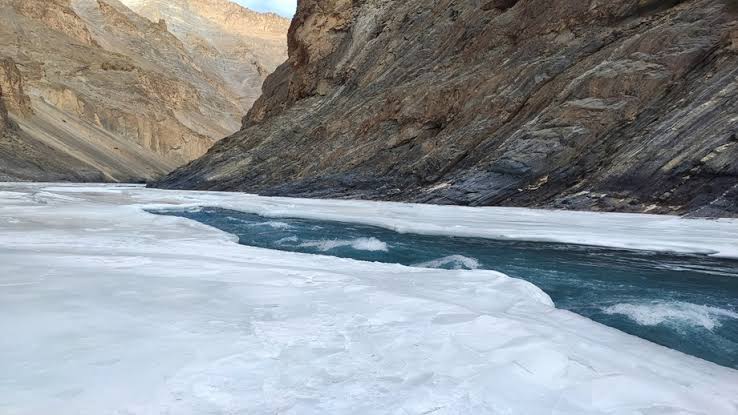Three new glacial lakes may be formed in Ladakh, a study conducted by geologists has revealed.
The study states that the depth of lakes may range from 34 to 84 metres and will be formed due to the accelerated melting of the Himalayan Parkachik Glacier
The study attributed the accelerated glacial retreat to ongoing climate warming, which also causes surface morphological or geological changes to glaciers. The study was conducted by the scientists of the Wadia Institute of Himalayan Geology, headed by Dr Manish Mehta.
Parkachik Glacier is one of the largest glaciers in the Suru River valley, which is a part of the Southern Zanskar Ranges, western Himalaya, in the union territory of Ladakh.
The findings of the study were published in the journal, ‘Annals of Glaciology’. The morphological and dynamic changes of the Parkachik Glacier in the Suru river, have been described by the scientists by procuring the data for the study from satellite imagery from year 1971 to 2021 and field surveys conducted between 2015 and 2021.
The study states that between the years 1971 to 1999 the average rate of retreat was approximately 2 meters per year and it went up to 12 meters per year between the years 1999 to 2021. It also revealed that between 2015 to 2021, the rate increased up to 20.5 meters, “Both the field and satellite-based observations indicate that the calving nature of the glacier margin and the development of a proglacial lake may have enhanced the retreat of the Parckachik Glacier,” a statement by Ministry of Science and Technology reads.
Keeping in view the results, the study mentions that the if the retreating continues three lakes can be formed.
Himalayan glaciers due to their vulnerability have been a subject of various studies like field-based investigations and remote sensing approach. “In contrast, understanding the ice thickness and distribution is foremost required for the Himalayan glaciers. However, existing approaches, like remote sensing, cannot directly estimate the glacier thickness. Based on ground penetrating radar, very few studies have been carried out on glacier thickness in the Indian Himalaya,” the statement further reads.
